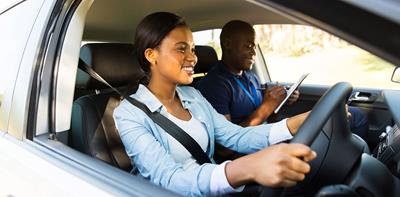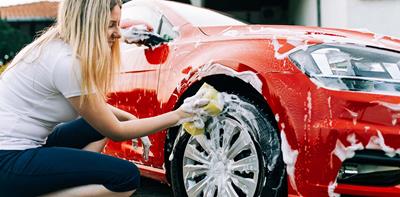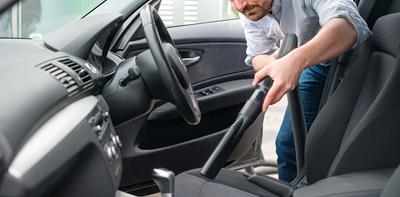
Car tax, also known as road tax or Vehicle Excise Duty (VED) is a tax you must pay on any vehicles you own and drive or keep on a public road[1].
It may not always be straightforward to know how and when to pay road tax, so here are the answers to some common questions.
When do I need to pay car tax?
You need to tax your car every year or whenever you buy a new or used car.
You can either tax your car for 6 or 12 months or pay in monthly instalments[2].
If your tax is due to expire, you will receive a reminder letter from the DVLA in the post. You should receive this around 3 weeks before your car tax is due to expire.
How do I pay car tax?
There are a number of ways that you can pay your car tax. You can call the DVLA, do it all online or go to a Post Office,
To do so, you’ll need the car’s registration number as well as a reference number. This can be found on a car tax reminder letter, in your vehicle log book or in the green ‘new keeper’ slip from a log book, if you’ve just bought the car[3]. If you do not have any of these documents, you’ll need to apply for a new log book.
You also have the option to set up regular direct debit payments[4]. You can easily set this up either online or at the Post Office.
How much does road tax cost?
The amount of tax you pay varies depending on the model of your car and when it was first registered. For cars registered before 1 March 2001 the rate of vehicle tax depends on its engine size1. The rate for cars registered on or after 1 March 2001 depends on CO2 emissions and fuel type.
The easiest way to find out how much you need to pay is by using the government’s online calculator.
How do I change my car’s tax class to or from disabled?
Drivers with a disability may not have to pay vehicle tax[5]. Find out if you’re eligible and how to claim.
If you’re disabled and taxing your car for the first time, then you may need to change its tax class. You may also need to do this if you’ve bought a car that was previously used by a disabled person. To do this, you can apply at a Post Office.
How do I find out if a vehicle is already taxed?
You can find out if a vehicle has up-to-date vehicle tax or has been registered as off the road (SORN) by using this online government service and entering the vehicle’s registration number.
When checking if a vehicle is taxed, bear in mind that it can take up to five working days for the records to update[6].
What vehicles are exempt from paying car tax?
It’s free to tax some types of vehicles[7]. These include vehicles used by an eligible disabled person, disabled passenger vehicles, mobility scooters and powered wheelchairs.
Other exemptions include electric vehicles and tractors, and other vehicles used for agriculture, horticulture and forestry. Some classic cars are also exempt.
It’s important to be aware that, even if you have nothing to pay, you still need to register your car as exempt with the DVLA[8].
Are classic cars exempt from car tax?
Cars built before 1 January 1980[9] are exempt from vehicle tax. If you don’t know when your car was built, but it was registered before 8 January 1980, then it’s also tax-free.
As with the other exemptions, you must still apply for a vehicle tax exemption with the DVLA.
What happens when I sell my car?
When you sell your car, any remaining taxed months won’t be transferred with it[10]. In fact, you’ll be able to claim a refund for any full months that are left. This refund should be issued automatically when you return the relevant documents to the DVLA after the sale.
If you are buying a new car, make sure you have taxed it before you get behind the wheel.
How is road tax monitored?
Drivers are no longer required to display a paper disc in the windscreen to prove their vehicle is taxed.
In the past, the police could check this disc. But now they use Automatic Number Plate Recognition (ANPR) cameras, coupled with the DVLA database to check whether a vehicle is taxed[11].
Anyone caught driving an untaxed vehicle could be fined up to £1,000[12].
Taxing your car is easier than it appears and it’s an essential job you must tick off, so you can continue to drive with peace of mind.
Go to Solved to read more about driving, the rules of the road and road safety.
[1] https://www.moneyadviceservice.org.uk/en/articles/car-tax-bands-explained
[2] https://www.gov.uk/vehicle-tax-rate-tables
[3] https://www.gov.uk/vehicle-tax
[4] https://www.gov.uk/vehicle-tax-direct-debit
[5] https://www.gov.uk/financial-help-disabled/vehicles-and-transport
[6] https://www.gov.uk/check-vehicle-tax
[7] https://www.gov.uk/vehicle-exempt-from-vehicle-tax
[8] https://www.theaa.com/driving-advice/driving-costs/car-tax-explained
[9] https://www.gov.uk/historic-vehicles/vehicles-exempt-from-vehicle-tax
[10] https://www.moneyadviceservice.org.uk/en/articles/car-tax-bands-explained#vehicle-excise-duty-when-selling-or-buying-a-vehicle
[11] https://www.rac.co.uk/drive/advice/buying-and-selling-guides/car-tax-bands-explained/
[12] https://www.rac.co.uk/drive/advice/legal/driving-without-tax-guide/


